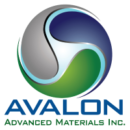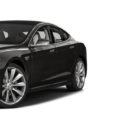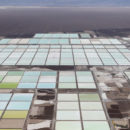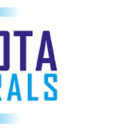Avalon Announces Results of Positive Preliminary Economic Assessment for its Separation Rapids Lithium Project $AVL.ca
Highlights
- An average mining rate (open pit) of 950,000 tonnes per year would yield an average annual production of 14,600 tonnes of lithium hydroxide for 10 years and 100,000 tonnes per year of feldspar mineral concentrate for 20 years, as it would continue to be recovered from previously processed material for an additional 10 years after the initial 10 year mine life.
- The discounted cash flow (“DCF”) analysis yields a 19% internal rate of return (“IRR”) on a pre-tax basis and a 16% IRR on an after-tax basis, assuming 100% equity financing. The Project’s net present value (“NPV”) at an 8% discount rate is CAD$343 million pre-tax and CAD$228 million after-tax.
- Total Project construction capital costs are estimated at $514 million, which is inclusive of $86 million in contingencies and $7 million in sustaining capital.
TORONTO, Ontario, Sept. 27, 2016 — Avalon Advanced Materials Inc. (TSX:AVL) and (OTCQX:AVLNF) (“Avalon” or the “Company”) is pleased to announce the completion of a positive Preliminary Economic Assessment (“PEA”) for its 100% owned Separation Rapids Lithium Project (the “Project”), Kenora, Ontario. The PEA was prepared under the oversight of Micon International Limited (“Micon”).
The Separation Rapids Lithium Deposit (the “Deposit”) was originally evaluated by Avalon in 1997-2000 as a potential producer of lithium minerals for glass-ceramics under a pre-feasibility study (which was also prepared by Micon). The purpose of this 2016 PEA was to investigate the potential for recovery of a lithium product suitable for the battery market from the same lithium resource, and the results confirm a technically viable process and positive economics for the recovery of a battery-grade lithium hydroxide product.
Read MoreRare metals expert predicts North American shortage of lithium for EVs $PFN.ca $BFF.ca $DGO.ca $FMR.ca $SX.ca
The amount of lithium being produced in North America will not be enough to meet the growing demand for electrical vehicles, but the problem could be alleviated through recycling, a renowned authority on specialty metals said in a recent teaser video for his upcoming presentation at the Mines and Money show in Toronto.
Jack Lifton, senior editor for InvestorIntel Corp. and a consultant, author, and lecturer on technology metals such as cobalt, lithium and graphite, says he is perplexed as to why, when lithium-ion batteries have reached end of life, more are not recycled instead of landfilled. According to an article written by Palladium Energy, the U.S. EPA considers lithium-ion batteries “safe” for disposal in contrast to nickel-cadmium and lead-based battery products.
“We don’t produce enough lithium, cobalt or spherical graphite in North America to make even a fraction of the vehicles Mr. Musk tells us he’s going to be making by 2018”
The article notes the low economic gains to be made from lithium battery recycling, with the scrap value of lithium at least one-tenth of the value of lead.
This is what electric cars are doing to the lithium market $DGO.ca $SX.ca $PFN.ca $BFF.ca, $FMR.ca

The electric car market is still small, but manufacturers are ramping up production, and fast; Tesla wants to go from building an estimated 80,000 cars in 2016 to 500,000 by 2018, and are building massive battery “Gigafactories” to make that happen. Some markets have targeted huge rises in ownership, most notably China, which predicts (paywall) there will be five million cars with lithium-based batteries on its roads by 2020.
Lithium, a light, reactive metal found in salt deposits in South America, Australia, and China, is central to the production of lithium-ion batteries. The technology makes smartphones rechargeable and is central to the much larger batteries which power electric cars.
Read MoreLithium Supply and Demand $DGO.ca $PFN.ca $BFF.ca $FMR.ca $SX.ca
Lithium Supply
- Global lithium supply is concentrated in relatively few locations; it is dominated by Australian hard-rock production (Greenbushes), and South American brine deposits in Argentina and Chile.
- The market is currently dominated by a small number of companies which control around 50% of supply; Albemarle (ALB US), which owns Rockwood Lithium, SQM (SQM US), FMC (FMC US) and Chengdu Tianqi listed on the Shenzhen Exchange.
- South American brine supply has risks of disruption, both geo-political and climatic. Supply in 2015 was disrupted by increased rainfall. Most recently, SQM’s Atacama core operations lease has been under threat from an arbitration case, where the lessor is seeking early termination of the lease.
- New supply ramp-up has also experienced challenges and delays, such as at Orocobre’s operations in Argentina.
- It is estimated that there is 200ktpa of advanced stage development capacity that could be brought online by 20207. This is far short of the predicted demand growth, which is likely to be favourable for future lithium prices.
- Hard rock deposits generally have 12 month construction periods; examples of new hard rock deposits coming on stream include Neometals’ Mt Marion project in Western Australia, expected to commence production in 2016.
- Lithium production from other sources, such as clay deposits in Mexico, carry greater developmental risk, but if successful would bring about a welcome addition to supply.
- Future supply diversification to bring new projects on stream in safe jurisdictions around the world is critical to the ongoing “green revolution”.
Lithium Demand
Factors Driving Demand – Key Points
Read MoreIncreasing the Storage Capacity of Lithium Batteries $DGO.ca $FMR.ca $BFF.ca
Tell us about BioSolar.
BioSolar is developing electrode material technologies to increase the storage capacity, lower the cost and extend the life of lithium-ion batteries. BioSolar initially focused its development effort on high capacity cathode materials since most of today’s Li-ion batteries are “cathode limited.” With the goal of creating the company’s next generation super battery technology, BioSolar is also investigating high energy anode materials recognizing the fact that the overall battery capacity is determined by combination of both cathode and anode.
Tell us a little bit about yourself and what brought you to this work at BioSolar.
I have been working on lithium-ion battery development since 1998 when I was a graduate student in South Korea. I remember how exciting and happy I was with certain battery materials I was able to synthesize in the lab. Prior to starting my PhD work at Marquette University, I worked for LG developing batteries. After obtaining my PhD in Electronic Material, I then joined Johnson Controls Inc., Battery Tech Center also located in Milwaukee, WI in 2008.
Read More









